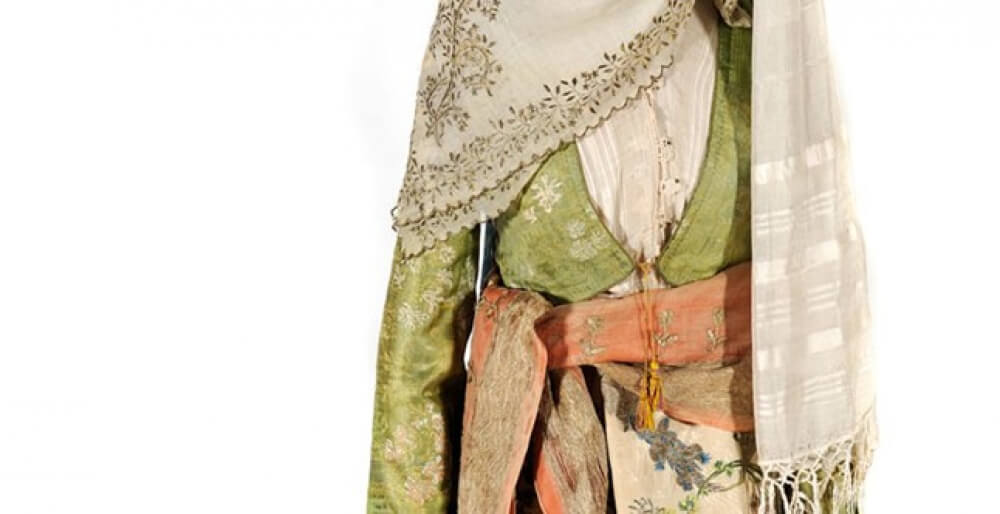Costumes with dress and skirt
With elements from both Byzantine and western costume design, dresses were worn in the second half of the 18th and in the 19th century in mainland and mainly in insular Greece. They are made of domestic or imported precious silk fabrics and are always worn over cotton, linen or silk tunics.
They are distinguished in different variations:
The sleeveless dresses have a deep opening in the chest and are found either loose as in Lemnos, or with a close-fitting upper body and a single or double pleated skirt. They often have an additional hem made of luxurious fabric, as in Hydra and Skyros islands. Over the dress of this form, a short sleeved cloak is worn with different local names eg. tzaka in Hydra island, gounela in Psara, sarka in Cyprus etc.
Pleated dresses with long sleeves and a tight body are also found. The sleeves are sometimes narrow, as in Naoussa, and sometimes wide and slanted from the elbow down, as in Ioannina (corridor L1). They are accompanied by an external cloak as the tsioumpe in Lefkada, the pirpiri in Ioannina, etc.
Skirts, finally, are pleated and worn over silk or cotton shirts trimmed with lace or white embroidery. They are accompanied by an external sleeved cloak, the pesli in Corfu, the binisi in Ios, etc.
Embroidery
Modern Greek embroidery flourished in all regions of Hellenism from the mid 18th to the late 19th centuries. Made by mainly anonymous creators, it is characterized by its rich content, the color harmony and the executive perfection.
Depending on their use, they are distinguished in embroidery for household decoration, embroidery of traditional clothing and ecclesiastical embroidery.
As to their form, they are classified in colored, white, with laces and gold-embroidered variations. The first three categories are products of female handicraft and the fourth is in the field of organized male handicraft.
The motifs of the embroideries survive from generation to generation and are decorative, narrative and symbolic.
The frequently appearing motifs are: rosettes, palmettes, flowers, trees of life and flowerpots (longevity symbols), pomegranates (fertility), pigeons (purity), crosses (symbolizing faith), the double-headed Eagles (power), mermaids (deterrent of evil). Also, we find idyllic wedding scenes, dancing and hunting, as well as scenes from the Greek naval life.








